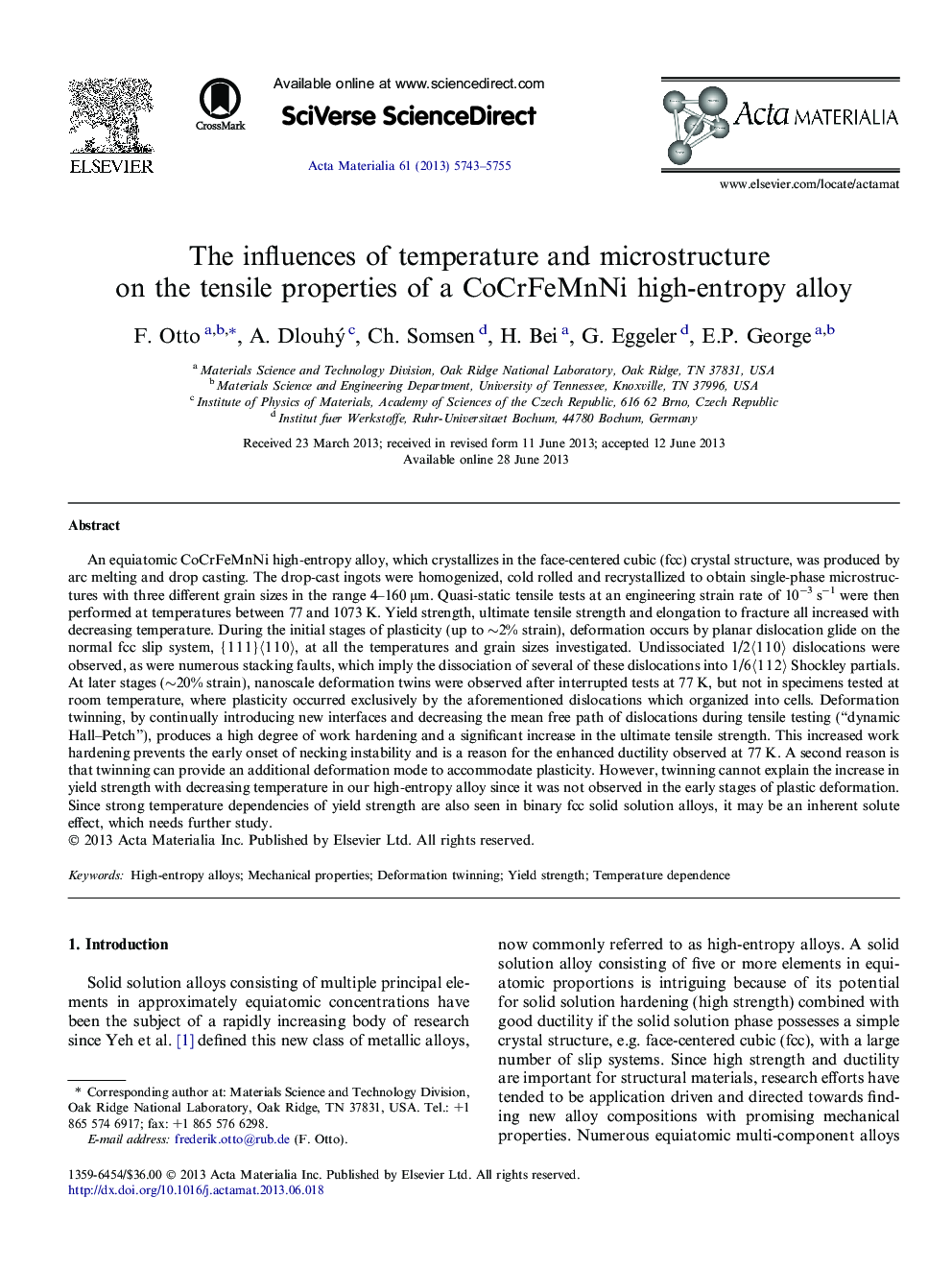| کد مقاله | کد نشریه | سال انتشار | مقاله انگلیسی | نسخه تمام متن |
|---|---|---|---|---|
| 1446155 | 988600 | 2013 | 13 صفحه PDF | دانلود رایگان |

An equiatomic CoCrFeMnNi high-entropy alloy, which crystallizes in the face-centered cubic (fcc) crystal structure, was produced by arc melting and drop casting. The drop-cast ingots were homogenized, cold rolled and recrystallized to obtain single-phase microstructures with three different grain sizes in the range 4–160 μm. Quasi-static tensile tests at an engineering strain rate of 10−3 s−1 were then performed at temperatures between 77 and 1073 K. Yield strength, ultimate tensile strength and elongation to fracture all increased with decreasing temperature. During the initial stages of plasticity (up to ∼2% strain), deformation occurs by planar dislocation glide on the normal fcc slip system, {1 1 1}〈1 1 0〉, at all the temperatures and grain sizes investigated. Undissociated 1/2〈1 1 0〉 dislocations were observed, as were numerous stacking faults, which imply the dissociation of several of these dislocations into 1/6〈1 1 2〉 Shockley partials. At later stages (∼20% strain), nanoscale deformation twins were observed after interrupted tests at 77 K, but not in specimens tested at room temperature, where plasticity occurred exclusively by the aforementioned dislocations which organized into cells. Deformation twinning, by continually introducing new interfaces and decreasing the mean free path of dislocations during tensile testing (“dynamic Hall–Petch”), produces a high degree of work hardening and a significant increase in the ultimate tensile strength. This increased work hardening prevents the early onset of necking instability and is a reason for the enhanced ductility observed at 77 K. A second reason is that twinning can provide an additional deformation mode to accommodate plasticity. However, twinning cannot explain the increase in yield strength with decreasing temperature in our high-entropy alloy since it was not observed in the early stages of plastic deformation. Since strong temperature dependencies of yield strength are also seen in binary fcc solid solution alloys, it may be an inherent solute effect, which needs further study.
Journal: Acta Materialia - Volume 61, Issue 15, September 2013, Pages 5743–5755